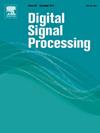Cognitive radar recognition with Kolmogorov-Smirnov test and momentum gradient descent
IF 2.9
3区 工程技术
Q2 ENGINEERING, ELECTRICAL & ELECTRONIC
引用次数: 0
Abstract
The emission parameters of cognitive radars can adaptively change according to the environment, which poses a challenge to radar electronic countermeasures (ECM). To counter cognitive radars, it is essential to identify the cognitive characteristics. In this paper, a method is proposed to recognize cognitive radars with power allocation function. The signal-to-interference-plus-noise ratio (SINR) distribution of cognitive radars is derived through feature functions, and hypothesis test is used to identify whether the target radar has cognitive function by designing a Kolmogorov-Smirnov (K-S) detector to recognize adaptive optimization power allocation. Subsequently, a momentum gradient descent algorithm is used to optimize the signal of the jamming machine to reduce type II error probability of radar recognition. K-S detector is simulated and compared with Afriat detector, SVM and MLP detector. Results demonstrate that the K-S detector outperforms both the Afriat and MLP detectors in identifying cognitive radars with dynamic power allocation functionality. At the same detection probability, the K-S detector achieves a 2 dB improvement over the MLP detector and a 4 dB improvement over the Afriat detector.
求助全文
约1分钟内获得全文
求助全文
来源期刊

Digital Signal Processing
工程技术-工程:电子与电气
CiteScore
5.30
自引率
17.20%
发文量
435
审稿时长
66 days
期刊介绍:
Digital Signal Processing: A Review Journal is one of the oldest and most established journals in the field of signal processing yet it aims to be the most innovative. The Journal invites top quality research articles at the frontiers of research in all aspects of signal processing. Our objective is to provide a platform for the publication of ground-breaking research in signal processing with both academic and industrial appeal.
The journal has a special emphasis on statistical signal processing methodology such as Bayesian signal processing, and encourages articles on emerging applications of signal processing such as:
• big data• machine learning• internet of things• information security• systems biology and computational biology,• financial time series analysis,• autonomous vehicles,• quantum computing,• neuromorphic engineering,• human-computer interaction and intelligent user interfaces,• environmental signal processing,• geophysical signal processing including seismic signal processing,• chemioinformatics and bioinformatics,• audio, visual and performance arts,• disaster management and prevention,• renewable energy,
 求助内容:
求助内容: 应助结果提醒方式:
应助结果提醒方式:


